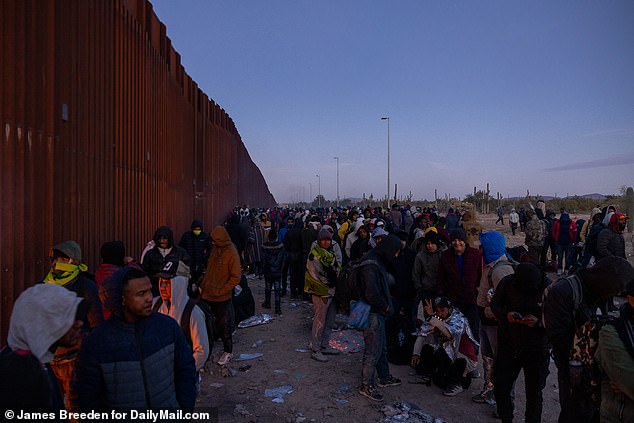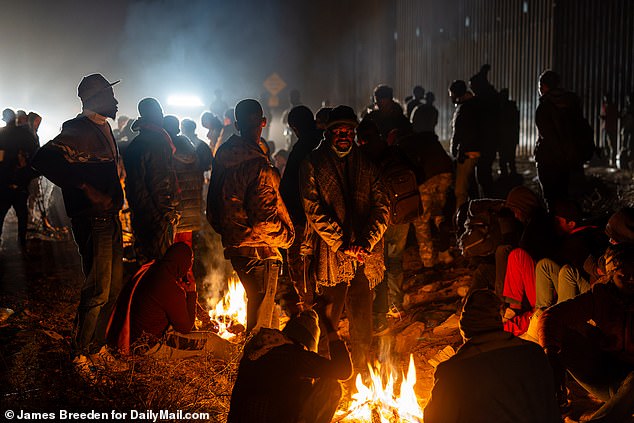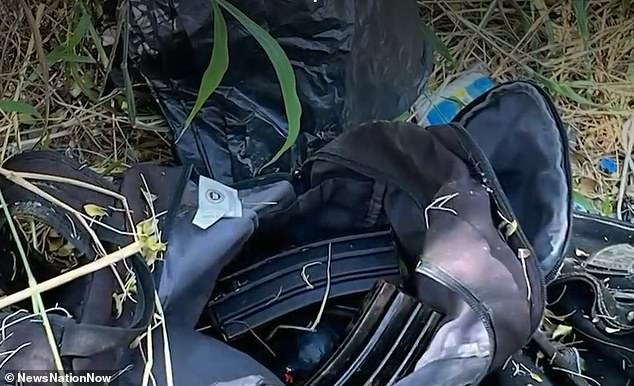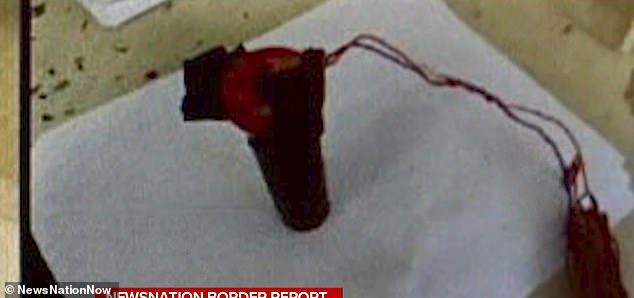Democratic Arizona governor deploys National Guard to the southern border after THOUSANDS of migrants surge across to the US at Lukeville – and Mexican officials seize at least 10 IEDs in Tucson
Arizona Governor Katie Hobbs signed an executive order deploying the National Guard to her states' overwhelmed southern border, where record numbers of migrants are crossing.
Hobbs, a Democrat, issued the order Friday as she saw the federal government's decision to close the port of entry in Lukeville, Arizona, which she said has created a “full-blown humanitarian crisis” in the area.
The Governor the president has accused Joe Biden, who has failed to secure the southern border, and is demanding half a billion dollars in federal compensation for the state's spending on the crisis.
“Once again, the federal government is refusing to do its job to secure our border and keep our communities safe,” Hobbs said.
“With this Executive Order, I am taking action where the federal government has not. But we cannot stand alone. Arizona needs resources and manpower to reopen the Lukeville border crossing, manage the flow of migrants and maintain a safe, orderly and humane border.”
Arizona Governor Katie Hobbs signed an executive order deploying the National Guard to her overwhelmed southern border

Hobbs said the recent closure of the Lukeville border crossing (pictured) has created a humanitarian crisis
Hobbs said, “Despite continued pleas for assistance, the Biden administration has refused to deliver desperately needed resources to Arizona's border.”
In the executive order, the governor said there are already approximately 2,500 National Guard members at the southern border, including 243 in the Tucson sector.
However, the federal government rejected an earlier request to move more members to Arizona and help Lukeville reopen.
It was not specified how many National Guard members the governor is requesting. Family AZ reported that members will be stationed at multiple border locations, including Lukeville and the San Miguel border crossing.
The Tucson region, which includes Lukeville, saw a record 12,000 migrant crossings in one day last week.

Migrants at the border crossing in Lukeville, Arizona. A huge wave of mainly African migrants has overwhelmed the city

Migrants warm up by the fire in Lukeville, Arizona. In the Tucson region, which includes Lukeville, a record 12,000 migrants crossed in one day last week
That led to 17,500 meetings in one week – the highest weekly total ever recorded.
U.S. Customs and Border Protection data shows there have been 253,315 collisions at the southwest land border so far in December.
Border patrol agents have been warned to be vigilant after the Mexican military seized 10 improvised explosive devices (IEDs) at the Arizona border, as the US continues to see a surge of migrants.
An internal security alert from Fox Business told border agents to “exercise extreme caution and report possible armed individuals with possible explosives.”
It comes after Mexican officials found the IEDs on Wednesday after being warned by US officials of a cartel gun battle south of the border. The cartels are reportedly fighting for control of a hole in the border wall used for drug and human smuggling.

Border Patrol agents have been alerted after Mexican officials seized 10 IEDs at the Arizona-Mexico border. In September, Border Patrol agents found an abandoned backpack filled with IEDs and cannonball-sized ammunition.

In May, US officials found an IED at the point of entry into Arizona. The device was used in an M&M container wrapped with electrical tape
Prior to the IED findings, US authorities had arrested a man on the US side armed with a loaded AK-47 rifle, two loaded AK magazines, blanks and a pistol.
In September, Border Patrol agents found an abandoned backpack filled with IEDs and cannonball-sized ammunition, News Nation reported. No migrants were found on site.
In May, US officials found an IED at the point of entry into Arizona. The device was used in an M&M container wrapped with electrical tape.
Human smugglers recently used a remote part of the Arizona desert to bring migrants into the US.
A shift in smuggling routes has brought an influx of migrants here from countries as far away as Senegal, Bangladesh and China, prompting the Border Patrol to seek help from other federal agencies and draw attention to an issue of critical importance in next year's presidential elections.
